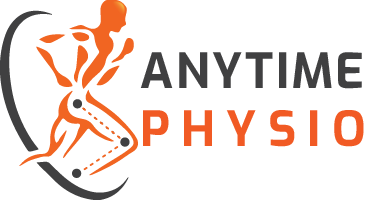Physiotherapy for Neck Pain
HOW DOES ANYTIME PHYSIO TREAT NECK PAIN?
Neck pain is the one most common conditions treated at Anytime Physio. Neck pain is very common in office workers and heavy manual labourers. Our Brisbane sports physiotherapists are experienced in assessing, diagnosing and treating neck pain. Early physio treatment for neck pain involves manual hands-on treatment, including manual therapy, dry needling and soft tissue massage, to provide pain relief. Once pain has been managed, your physiotherapist will prescribe therapeutic stretches and exercises for the deep cervical muscles to help support the joints of the neck to prevent recurrence.
WHAT CAUSES NECK PAIN?
Acute neck pain is usually caused by a strain or sprain of one of the intervertebral discs (most commonly the C2/3 disc), the cervical zygapophyseal joints (otherwise known as cervical z-joints or cervical facet joints) or the supporting muscles and ligaments. In some cases, neck pain may involve irritation of the nerve tissue in the cervical spine. Nerve tissue irritation occurs when cervical disc herniations, disc bulges or bony spurts cause increased pressure on the nerves in the neck. This can lead to neck pain with pain radiating into the arm and associated numbness, pins and needles and weakness. This is also referred to as cervical radiculopathy.
Whiplash is a specific form of neck pain that is caused by an acceleration/deceleration injury to the neck. Click here to read more about whiplash.
Chronic neck pain can be caused by many factors. Posture and prolonged sitting is often a significant contributing factor in chronic neck pain. Instability of the cervical spine, reduced muscle strength and support and inflexibility of the muscles of the shoulder girdle and chest can also contribute to chronic neck pain. Pain sensitization (sensitization of the nerve tissue involved in signalling and processing pain) also plays a big part in maintaining chronic neck pain.
WHO GETS NECK PAIN?
Neck pain is a very common musculoskeletal condition. Neck pain is more prevalent in females and occurs more frequently in people employed in sedentary roles such as office workers and administration staff. Acute sprains occur more frequently in younger individuals (usually before the age of 25) and chronic neck pain generally affects those in the 45+ age group. This is because osteoarthritis, a degenerative condition affecting joints and cartilage, can lead to stiffness and pain in the neck.
ACUTE INJURY MANAGEMENT
If you’ve just hurt your neck, here are a few tips to get you on the road to recovery. Please remember that this advice is general and does not constitute medical advice.
Check For Red Flags
When managing any pain condition, it is important to go through a series of “checks” to ensure that the pain is not likely to be caused by anything more sinister.
Download your free Neck Pain Checklist Below:
Rest From Aggravating Activities
When you injure yourself, your body produces to pain to protect you from further injury. It acts to stop you from further irritating structures so that your body can heal. In the early stages, it is important to give these structures a break from load and movement.
Remain Physically Active after a Neck Injury
Although this sounds contradictory, resting does not mean bed rest. It simply means avoiding activities and positions that cause your pain to worsen. It is important for your recovery to maintain physically active and remain at work (as long as this does not involve excessive aggravation of pain). Staying at work does not increase your risk of reinjury and is actually an important part of successful recovery from neck pain. Remaining active can help to decrease missed work days, prevent chronic pain and minimize disability associated with neck pain.
So what does this look like? Initially, this may simply involve gentle movements of the neck and neck. Later, once the pain improves, your physiotherapist will guide you through some specific exercises to restore healthy muscle recruitment and activation to help prevent reinjury.
Apply Heat for Neck Pain Relief
Heat can help to relax the muscles in the neck and shoulders that may be in spasm as a result of pain. Heat also increases local metabolic activity, helping your body to work through the healing process.
Book An Appointment with a Physiotherapist
Our Brisbane Physiotherapists are experts in assessing and treating neck injuries. We see them everyday and know each step of successful rehabilitation. Physiotherapy for neck pain involves identifying potential structures involved in the injury and the factors that led to the injury in the first place and designing a recovery plan suited to your specific presentation. Treatment options include hands-on manual therapy, massage, exercises to improve mobility and motor control of the spine and shoulder girdle.
